MXA RACE TEST: THE REAL TEST OF THE 2025 KTM 250SXF FACTORY EDITION
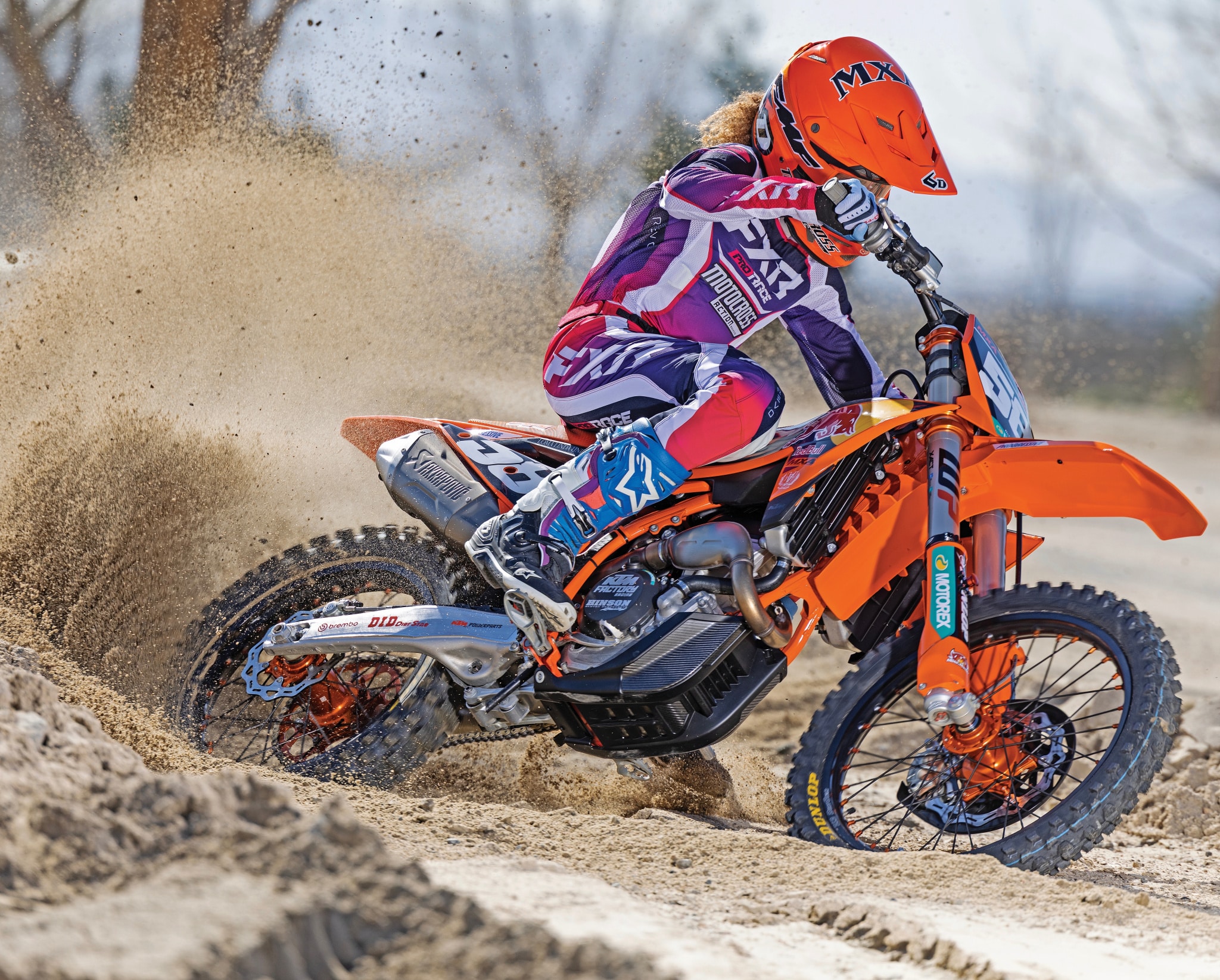 THE GEAR: Jersey: FXR Revo, Pants: FXR Revo, Helmet: 6D ATR-3, Goggles: FMF Powerbomb, Boots: Alpinestars Tech 10.
THE GEAR: Jersey: FXR Revo, Pants: FXR Revo, Helmet: 6D ATR-3, Goggles: FMF Powerbomb, Boots: Alpinestars Tech 10.
Q: IS THE 2025-1/2 KTM 250SXF FACTORY EDITION BETTER THAN THE STOCK 2025 KTM 250SXF?
A: If you’ve read anything about KTM’s Factory Edition models before, you’d know that these mid-year release models are a precursor of what’s coming next year. Last year the 2024-1/2 KTM 250SXF Factory Edition came with an updated frame that had new cutouts in the shock tower mount, it had less material underneath the steering tube, and thinner walls on the symmetrical down tubes, which are visible from both sides of the bike. Plus, it had new head stays, a new shock linkage and new suspension settings to button it all up. Fast-forward to now, the 2025-1/2 Factory Edition models don’t come with anything exciting and KTM doesn’t have any big changes on the horizon for the 2026 bikes, which means this bike is a carbon copy of last year’s 250SXF Factory Edition.
Is the Factory Edition better than the stock 2025 KTM 250SXF? Yes, because it has a few upgraded accessories, like the Akrapovic slip-on muffler and Wi-Fi connectivity unit, but it’s no better than last year’s Factory Edition.
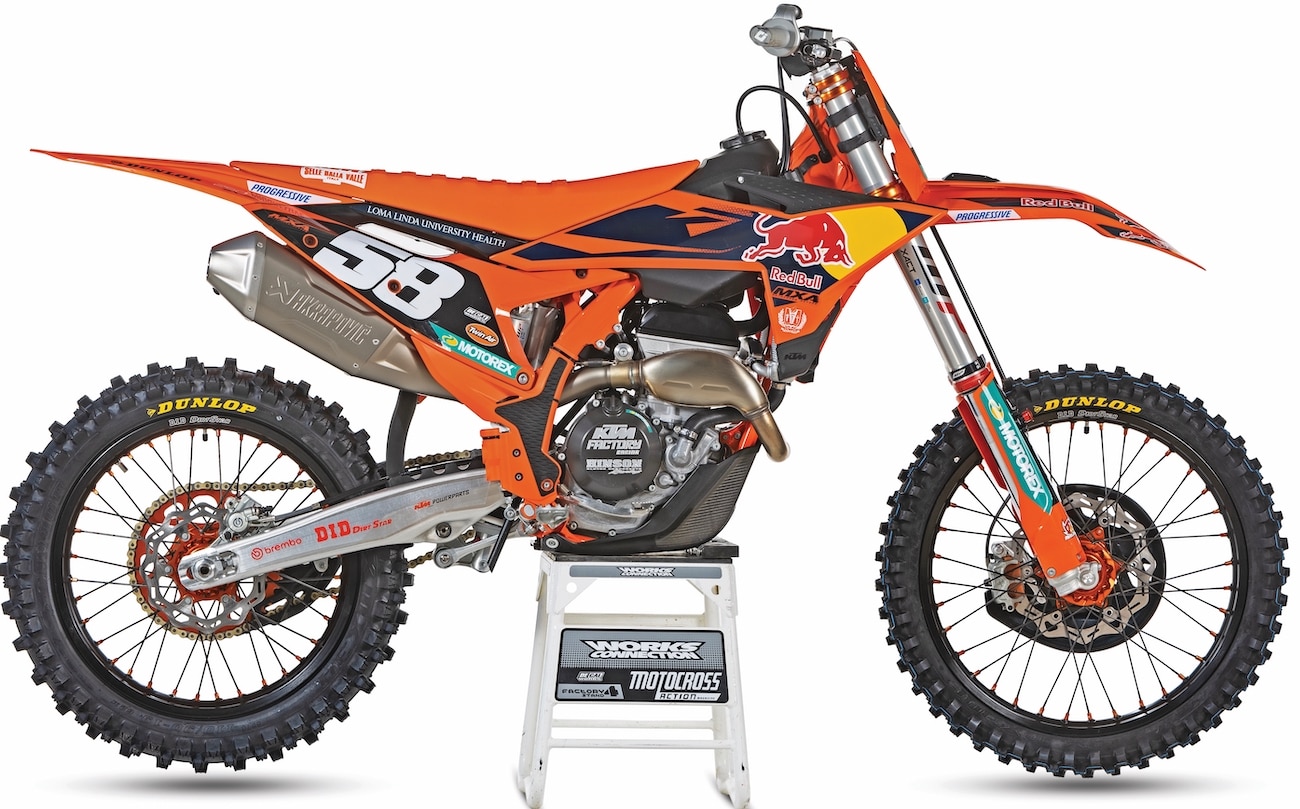 One word defines the KTM’s physique—sharp.
One word defines the KTM’s physique—sharp.
Q: IS THE $1200 MSRP UPCHARGE WORTH IT?
A: Of course, prices change throughout the year based on availability, but whether you get a discount or not, the $11,599 Factory Edition will always be more expensive than the $10,399 stock bike. But is it worth it? Let’s dive into the differences.
(1) Wheels. The KTM PowerParts Factory wheelset is worth over $1000, and it’s stronger than the stock wheels. However, they aren’t bullet-proof. The spokes still come loose, requiring extra attention during break-in. As with all KTM wheels, if you tighten them after each moto as you shake down the new bike, you’ll be fine. But, if you neglect the spokes during the initial hours, your wheels will suffer.
Are the wheels worth $1000? Let’s put it this way: when Josh Mosiman raced the 2021 Hangtown National on a stock KTM 450SXF (stock engine, stock suspension valving, stock air forks and all), Jody made him put these wheels on.
(2) Triple clamps. These orange CNC-machined WP split triple clamps are worth $550, and they have an adjustable offset steering stem with a 22mm setting, which is stock, or a quicker-turning 20mm setting. Our test riders like the geometry of the stock KTM’s, and we always leave it that way. We also don’t mind the stock triple clamps. We don’t see the triple clamps as a needle mover besides the fact that they look cool.
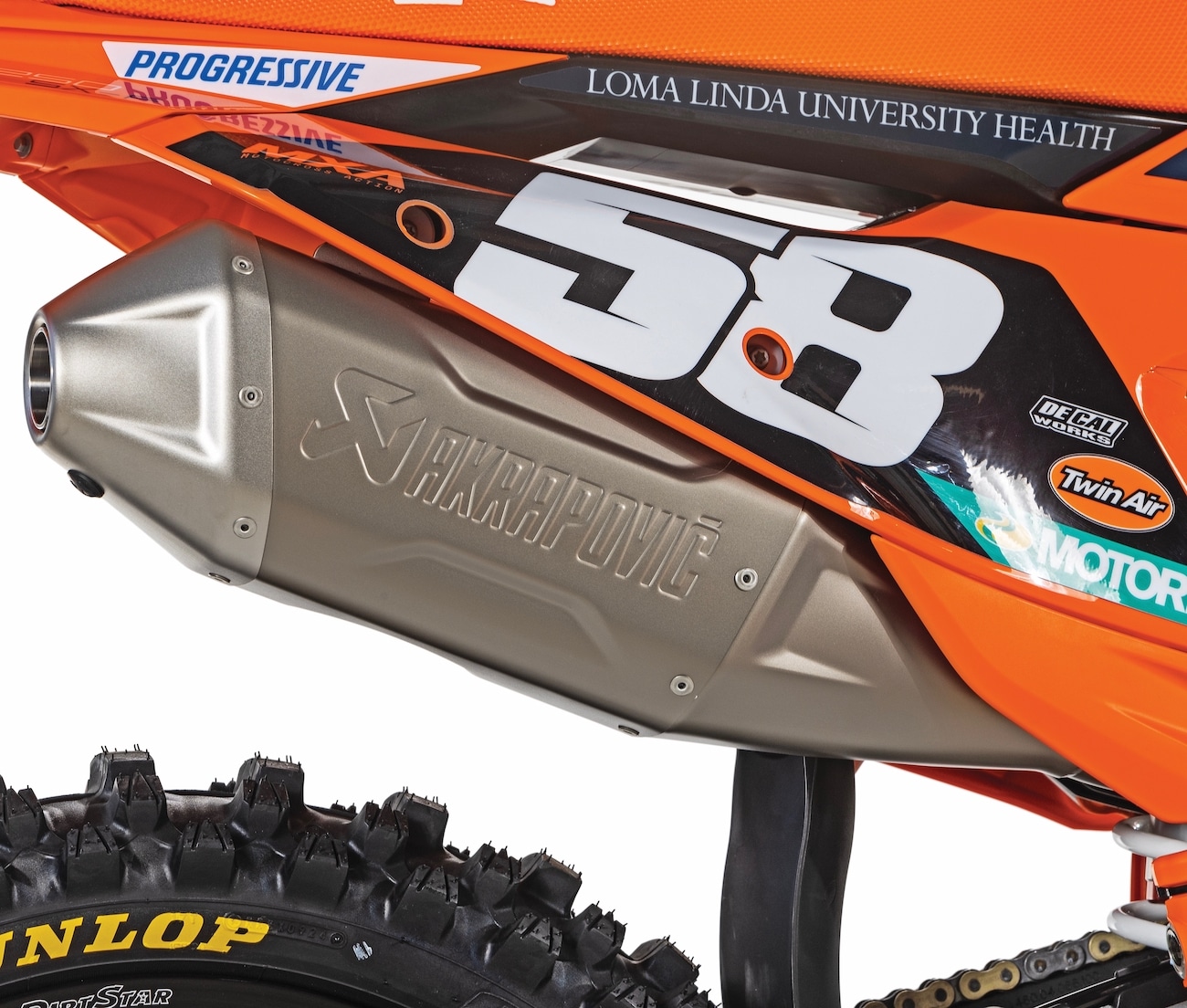 If you want an Akrapovic head pipe, it will not fit on the Factory Edition mid-pipe..
If you want an Akrapovic head pipe, it will not fit on the Factory Edition mid-pipe..
(3) Akrapovic slip-on. We love and hate this European slip-on muffler. We love how durable it is and how smooth the power comes on with it, but we don’t like that it’s only compatible with the stock head pipe. If you wanted to mate it to an Akrapovic head pipe, you couldn’t because their head pipe has a different diameter. You’re forced to run the stock KTM head pipe or buy a whole new Akrapovic system. The slip-on is worth just under $900.
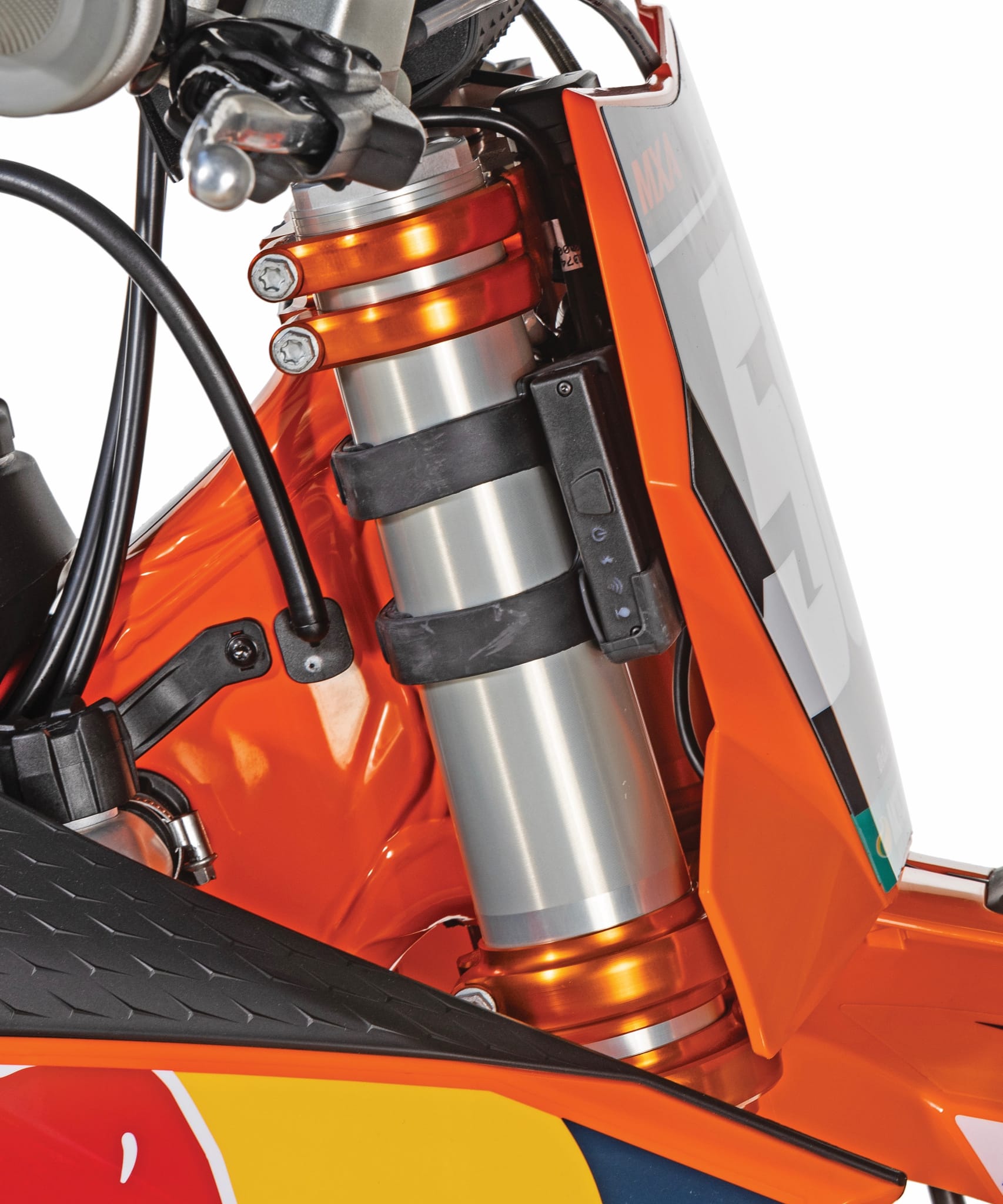 Most of our test riders like to adjust the throttle response to the strongest setting, but with the caveat that increasing throttle response reintroduces more engine braking back into the mapping.
Most of our test riders like to adjust the throttle response to the strongest setting, but with the caveat that increasing throttle response reintroduces more engine braking back into the mapping.
(4) CUO. KTM debuted their Connectivity Unit Off-road (CUO) on last year’s Factory Editions, and we originally thought it would come stock on the 2025 models, but we were wrong. KTM saved the connectivity unit for the PowerParts catalog and the Factory Editions. You can buy the front-fender GPS and the transponder for $249 and retrofit it onto the stock 2024 and 2025 models to access customizable mapping, but you have to pay monthly for the LitPro analytics.
(5) Frame. No structural updates were made to the frame this year, but the Factory Edition does come with the fancy orange frame. If you buy a 2025 model, it comes with a black chromoly steel frame.
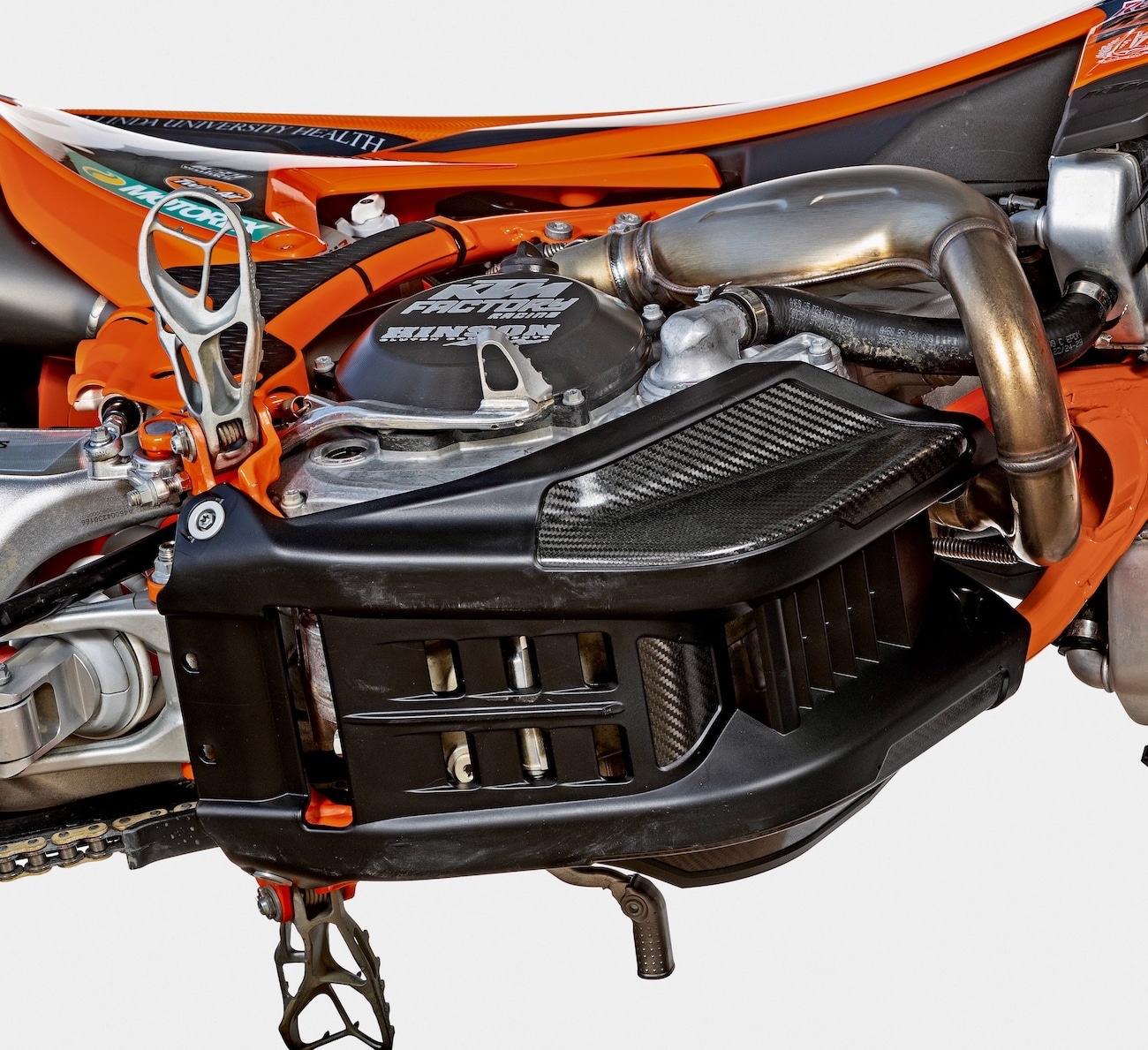 The KTM 250SXF Factory Edition not only comes with a high-price skid plate, but the threaded tabs are already under the frame.
The KTM 250SXF Factory Edition not only comes with a high-price skid plate, but the threaded tabs are already under the frame.
(6) Extras. The WP start device ($105), skid plate ($210) and Selle Dalla Valle seat cover ($80) make this bike ready to race. They aren’t expensive parts to add on after the fact, but it’s nice that KTM includes them stock. The Honda Works Edition and Kawasaki KX450SR don’t include start devices, and the KX450SR doesn’t even give you a gripper seat cover.
Q: HOW DOES THE 2025-1/2 KTM 250SXF FACTORY EDITION RUN ON THE TRACK?
A: The KTM 250SXF engine is the strongest on the track and on the dyno. However, even though it gained some more bottom-end power in 2023, it still has a long, smooth power characteristic when compared to the other brands. Yamaha’s low-end grunt is deceivingly strong with its backward-facing engine and ultra-loud downdraft intake system, but it’s not stronger than the KTM on any point of the dyno curve. The Yamaha YZ250F has a peak of 42.06 horsepower with 19.72 pound-feet of torque, while the KTM 250SXF hits 45.24 horsepower and 21.00 pound-feet of torque.
The KTM 250SXF doesn’t get the respect it deserves because it’s quieter and because it needs to be revved high into the rpm. With the Factory Edition, you can remove the insert from the Akrapovic muffler to make the bike slightly snappier coming out of corners (and louder). Just remove the small rubber plug underneath the muffler tip to access the Allen bolt to remove the insert. For riders who aren’t scared to rev, the KTM 250SXF Factory Edition is seriously impressive. Of course, you can add a tooth to the rear sprocket for more bottom-end snap, too.
Q: HOW DOES THE 2025-1/2 KTM 250SXF FACTORY EDITION HANDLE?
A: The 2025 KTM 250SXF Factory Edition inspires confidence. It feels like the wheels are glued to the ground. The updated frame isn’t as big of a selling point on the 250SXF as it is on the 450SXF because the engine is smaller and the bike is lighter. We didn’t have huge complaints with the 2023–’24 250SXF chassis, but we aren’t complaining about a more compliant frame for 2025, either. This bike has a more balanced feel than the 2022 and prior model KTM 250SXF bikes with less pitching front to rear.
Of course, the WP air fork still needs to be closely monitored, especially on a hot day, because the pressure will rise, but if you keep an eye on them, you’ll learn to love them. The 3-pound weight savings helps the front end feel lighter, and with the right air pressure, these forks provide great hold-up on steep downhills, which is easily tunable in the pits. Just bump up the air pressure for more holdup rather than installing new springs.
The KTM 250SXF engine does its best work high into the rpm range, and thankfully the chassis is capable of doing that without ill effects. It doesn’t bind under a load and soaks up acceleration chop with ease.
As for the racers who plan to do a WP 6500 or KYB spring conversion kit, just be forewarned that the bike will no longer be eligible for the stock classes at the AMA Amateur Nationals. The AMA rule book allows you to modify the internals of the suspension, but it has to keep the stock hardware on the exterior, which means the officials need to be able to see the stock fork caps with the Schrader air valve. A few suspension companies do make single-sided spring conversion kits that keep the stock caps, but they’re not in the same ballpark as the other spring conversions. Limited-class riders are better off sticking with the stock WP air forks.
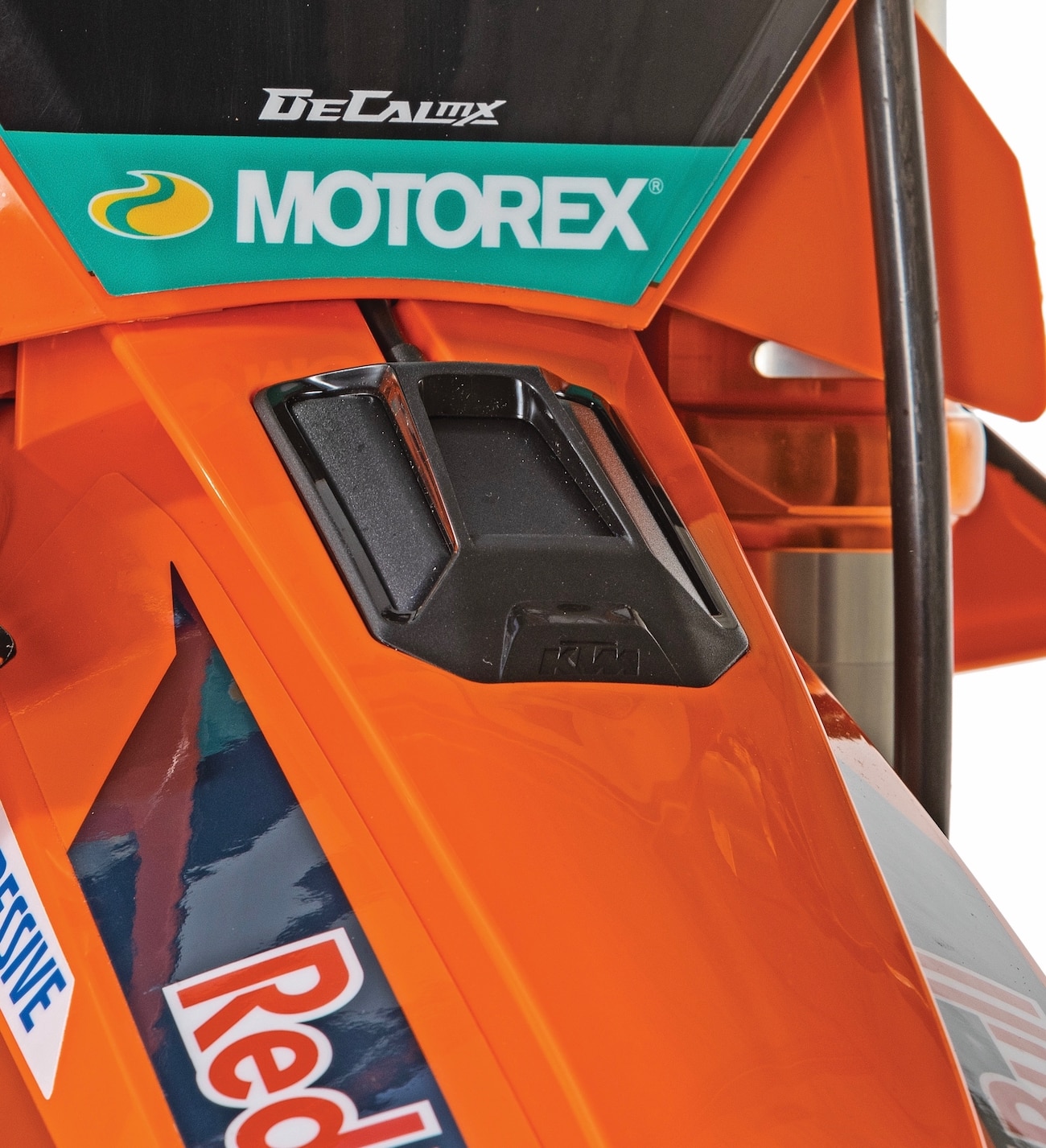 Every KTM Factory Edition owner will have access to the Wi-Fi ECU features and the GPS transponder on the front fender, but then you’ll have to pay monthly ($12) or yearly ($70) to access LitPro.
Every KTM Factory Edition owner will have access to the Wi-Fi ECU features and the GPS transponder on the front fender, but then you’ll have to pay monthly ($12) or yearly ($70) to access LitPro.
Q: WHAT’S THE CRAZE ABOUT KTM’S NEW WI-FI CONNECTIVITY UNIT?
A: KTM tried to launch a Bluetooth connectivity unit on their 2021-1/2 Factory Editions, but it was a quick failure. Three years later, KTM returned with a vengeance and a new partnership with LitPro, utilizing new tech to customize mapping, monitor engine performance and keep lap-time analytics that were previously only available to factory riders.
Customizable mapping via smartphone isn’t new, and the LitPro analytics aren’t new, either. Yamaha came out with their Power Tuner device in 2008, allowing riders to customize their ECU mapping. Yamaha then upgraded the Power Tuner device into a Wi-Fi connected smartphone app in 2017. LitPro has also been around for years, however, it’s never been integrated into the ECU.
The Austrians were behind the times on customizable mapping until last year when they came out with their CUO system for KTM, Husky and GasGas Factory Editions; now they’ve jumped to the top in this category, too.
What does it mean for LitPro to be connected to the ECU? It allows you to dive into the analytics of how your engine is working, link it to your lap times and map the track at the same time. For example, using LitPro’s technology you can see exactly which rpm your engine was at when you hit a big triple, or you can monitor how many times you changed gears on your fastest lap versus your other laps, and you can identify which throttle position you were in (and realize just how little time you spent at 100-percent throttle). It also will tell you the temperature of your coolant as well. Not only can it monitor all of these parameters, it can simultaneously look at your lap times, segment times, G-forces sustained, time spent in the air, average speed, distance jumped, your theoretical best possible lap (based on your fastest segment times) and more.
Every KTM Factory Edition owner will have access to all of those premium features for the first four weeks, but then you’ll have to pay monthly ($12) or yearly ($70) to access them. However, even if you don’t pay for the premium features, you’ll still be able to customize your throttle response, engine braking, QuickShift sensitivity and mapping for free. The app will also still keep track of engine hours, and provide a place to make notes about setting changes and maintenance intervals.
Q: IS THE CONNECTIVITY UNIT A BIG SELLING POINT?
A: Yamaha pioneered this technology in motocross. Kawasaki has had a calibration tool for a long time, and for 2024 they turned it into the KX Rideology app. Even Suzuki came out with an MX-Tuner 2.0 system, which uses a plug-in Wi-Fi device that requires a wiring harness and a 12-volt battery to then adjust mapping via a smartphone. Even Triumph has the MX Tune Pro app for their bikes.
Honda is the only manufacturer that hasn’t tried to do owner customizable maps, but they are also the only OEM that comes with three maps, three different traction control modes and three different Launch Control choices. Do we think Honda sells less bikes because they don’t have an app? Probably not. The apps are nice for marketing and they’re good for riders who like to tinker, but we’ve found that most riders set it and forget it—if they even set it at all. Our test riders like to mess with the maps, but once a sweet spot is found, the smartphone goes in the gear bag and it’s left there.
KTM’s app is much more intricate than the others now that it is utilizing LitPro technology, but even so, it hasn’t been utilized by consumers as much as KTM hoped it would.
Q: HOW IS THE MAPPING ON THE 2025-1/2 KTM 250SXF FACTORY EDITION?
A: The stock mapping is good, but, of course, we’re paid to test everything, so we tried the whole gamut. Most of our test riders like to adjust the throttle response to the strongest setting, but it varies widely on how much engine braking they want. The guys who grew up racing two-strokes will turn engine braking down to get that free-rolling two-stroke feeling coming into corners, while the guys who prefer four-strokes usually level the engine braking in the middle (stock) to benefit from the engine slowing the bike down off-throttle, relying slightly less on the brakes. Beginners like the engine braking turned up, but we don’t recommend it. One thing to note: our test riders did feel that increasing throttle response would reintroduce some engine braking back into the mapping. The riders who preferred to free roll left the throttle response in the stock (middle) setting to keep the back wheel as freed up as possible.
Also, when uploading a new map to the bike, the created map is assigned to the green map button (map 2), while the white map button (map 1) turns into a milder version of the created map. Unfortunately, it’s not possible to customize and upload both maps individually (like with Yamaha).
Q: WHAT DID WE HATE?
A: The hate list:
(1) Radiator cap. The plastic radiator cap hasn’t caused us any issues recently, but it’s a pain to take on and off. Nihilo Concepts also has a fix; they make a removal tool that helps.
(2) Spokes. They still come loose. Invest in a spoke torque wrench (we use one from Fasst Company) to ensure you don’t over-tighten them.
(3) Chain slack. You need about four fingers under the chain at the back of the buffer pad. We hate how loose it’s supposed to be on the new-generation Austrian bikes.
(4) Muffler. The Akrapovic muffler that comes stock isn’t the same as the full system Akrapovic sells to the public. The Akrapovic head pipe has a smaller diameter than the stock KTM head pipe, thus it won’t mate up to the Akrapovic muffler that comes stock on this bike. If you want an Akrapovic head pipe, you have to purchase a completely new system.
(5) Oil cap. The stock plastic oil-filler cap works fine on the stock KTM clutch covers, but when you install an aftermarket clutch cover (like the Hinson one that comes on the Factory Edition), then you need to use the aluminum Hinson oil cap, too. We found the plastic one came loose a couple of times.
Q: WHAT DID WE LIKE?
A: The like list:
(1) Start device. It’s hard to say “ready to race” when you don’t have a holeshot device; the Factory Edition bike has one.
(2) Shock collar. This new shock collar first came on the 2023 models and is more durable than before. Plus, it’s easier to use than the Showa and KYB collars.
(3) Factory skid plate. It’s nice that the steel frame comes with threaded bolt holes to mount the skid plate.
(4) No-tools clickers. Everything except the shock rebound clicker is easy to adjust by hand.
(5) Brakes. We’ve never complained about Brembo’s brake components.
(6) Clutch. Even though other brands have tried to copy it, the Austrian’s clutch design is still miles ahead of the rest in terms of durability and engagement off the starting line.
Q: WHAT DO WE REALLY THINK?
A: The KTM 250SXF has won our “250 Shootout” the last three years in a row. Everyone loves how durable and strong the engine is, and our test riders love how it handles. However, KTM has two hurdles to jump over in 2025. First, their financial troubles have scared away customers. Our industry was booming during the COVID pandemic and KTM invested heavily into increasing their production capacity, but then bike sales slowed down. KTM was left with warehouses full of 2025 bikes. They have gone through a court restructuring process to avoid bankruptcy, but it’s hurt the brand’s image more than anything. We fully expect KTM to press forward in 2026 and beyond, but right now we’re a little more worried about the future of their platform-sharing brands, Husqvarna and GasGas.
The second hurdle KTM has to jump over is with their suspension. They faced this before back in 2010 with the PDS single-sided shock design. KTM didn’t want to change to a rising-rate linkage system, but consumers demanded it. The 2025 equivalent of PDS versus linkage is coming back to haunt KTM on the fork issue.
MXA test riders like the stock WP air forks on the 250SXF and the 250SXF Factory Edition, but if KTM really wanted to sell more bikes, they need to do so by spec’ing coil-spring forks (like on their off-road bikes now). It’s no secret that KTM’s factory riders have been using air forks, but consumers still have a bad taste in their mouths from all the bad iterations of air forks in the past. This latest-generation WP air fork came in 2021, and the MXA test riders have been fans ever since, but consumers want what they want. A change to spring forks might be the positive press that KTM needs right now.


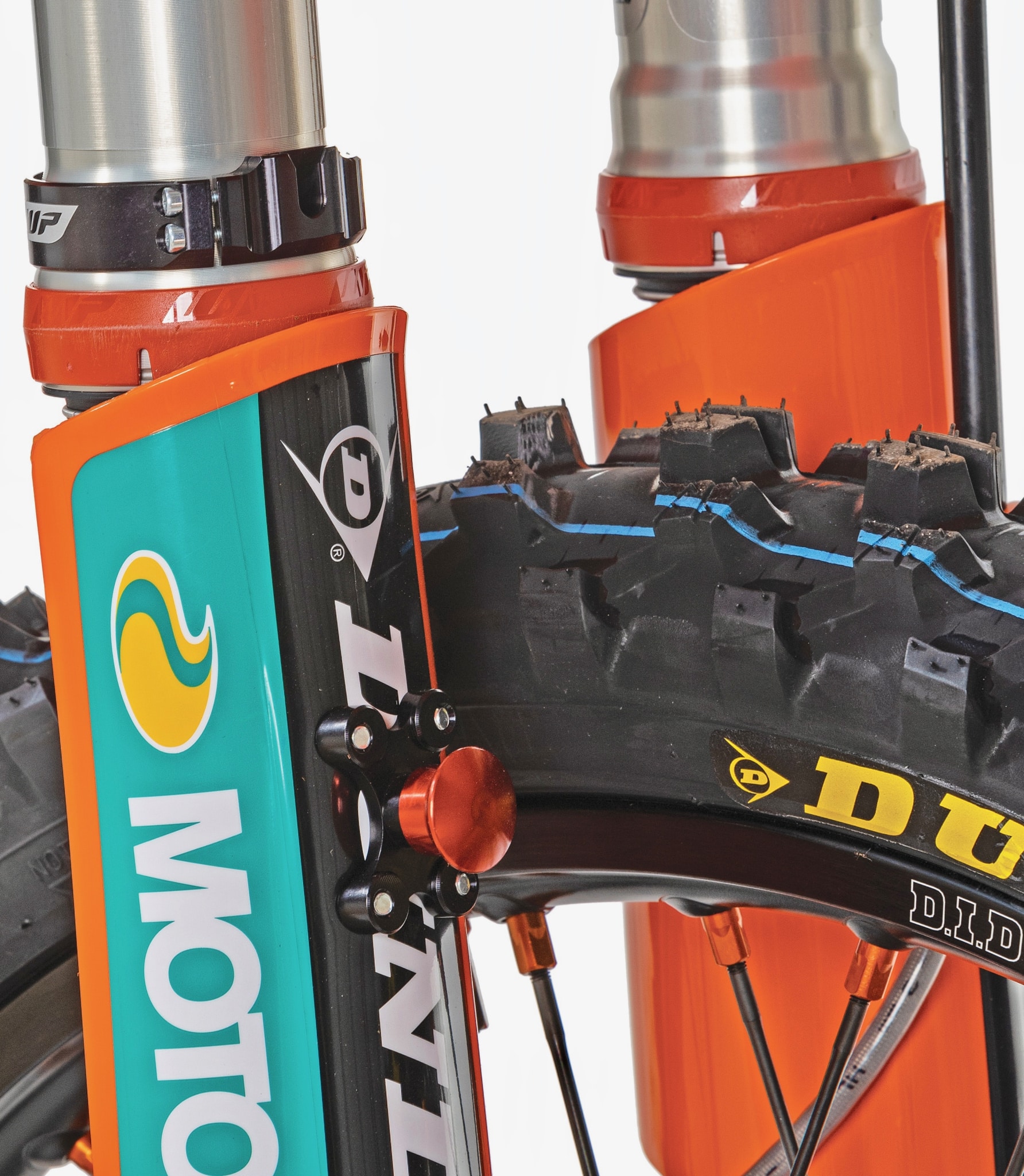
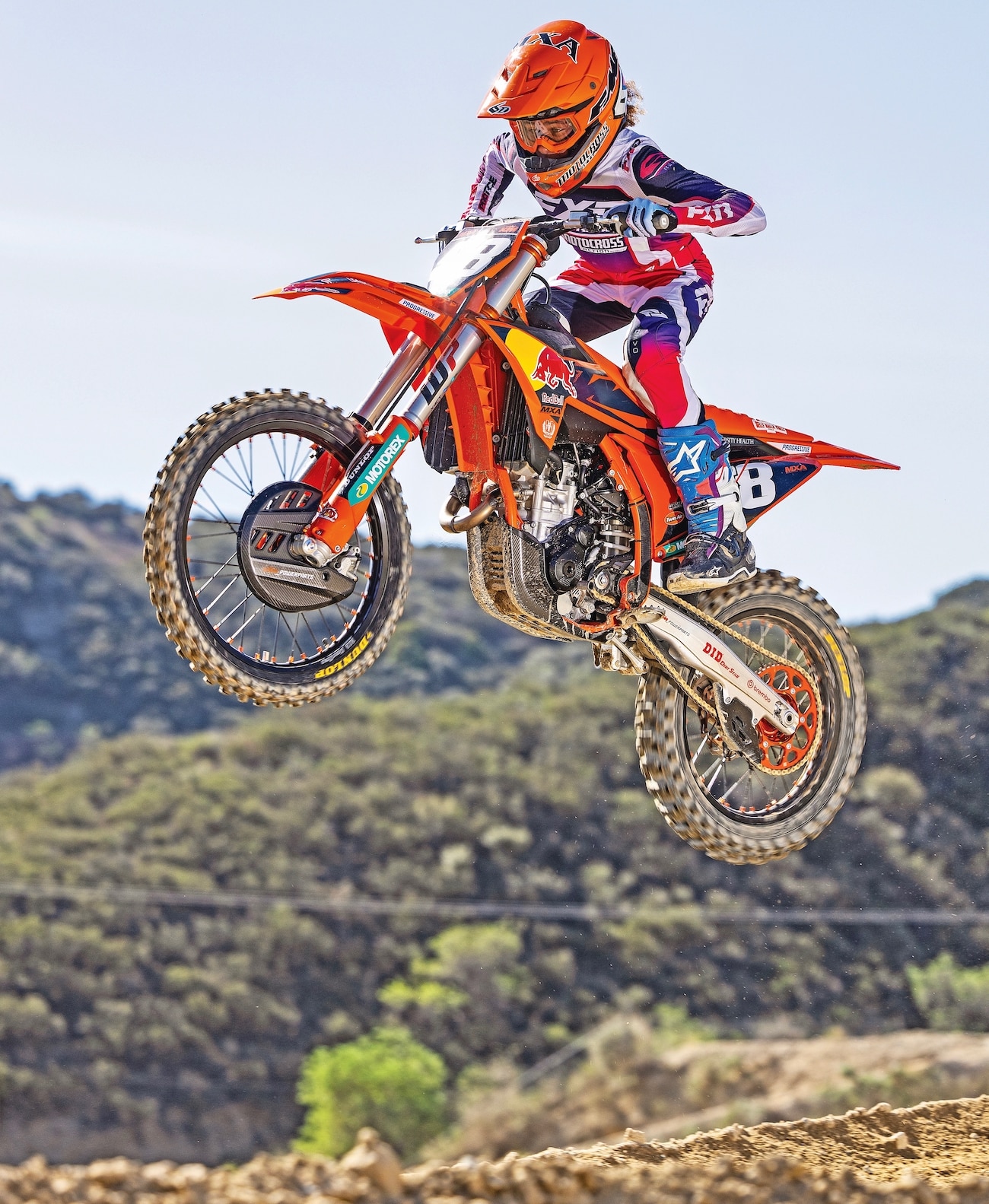
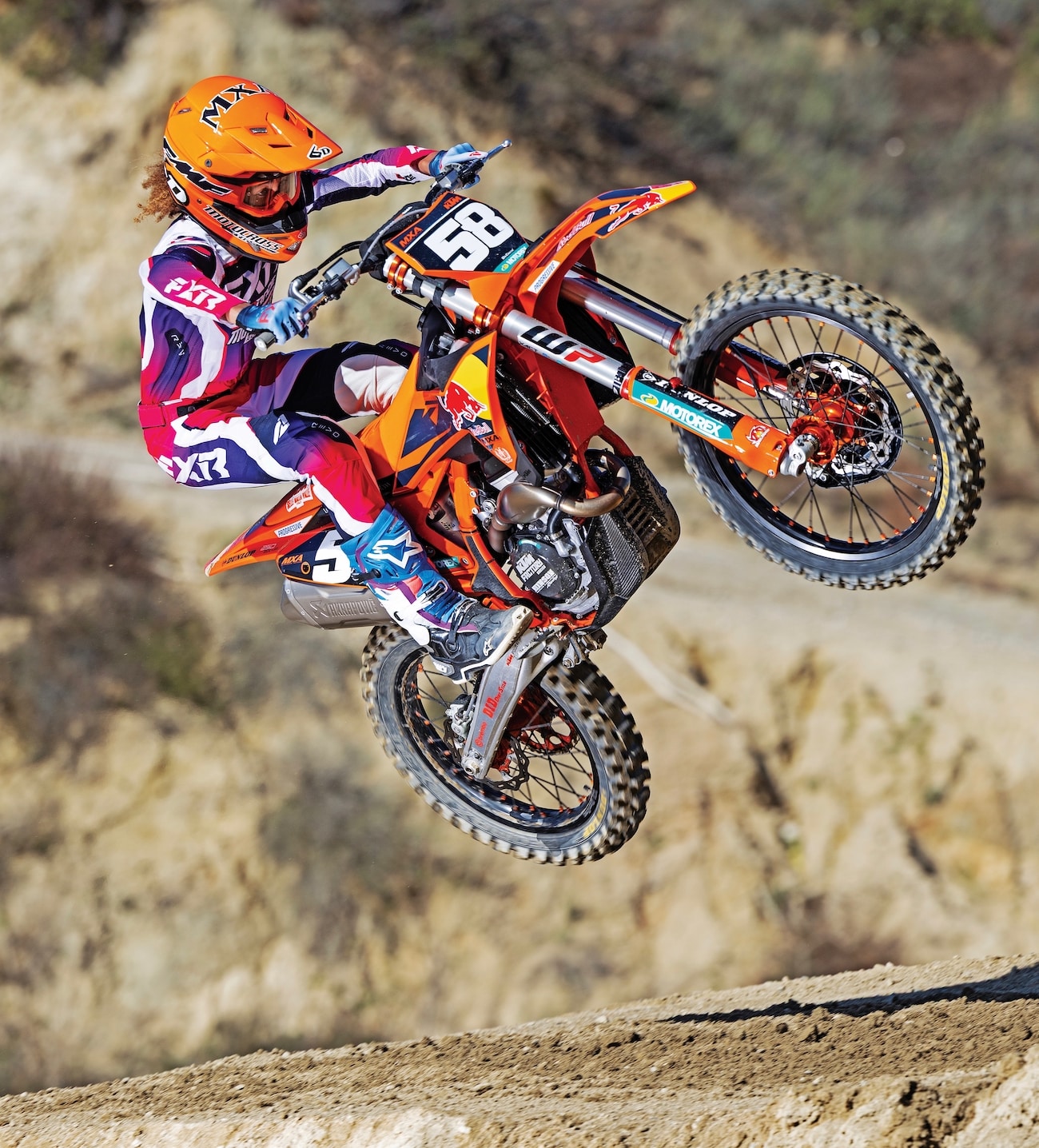
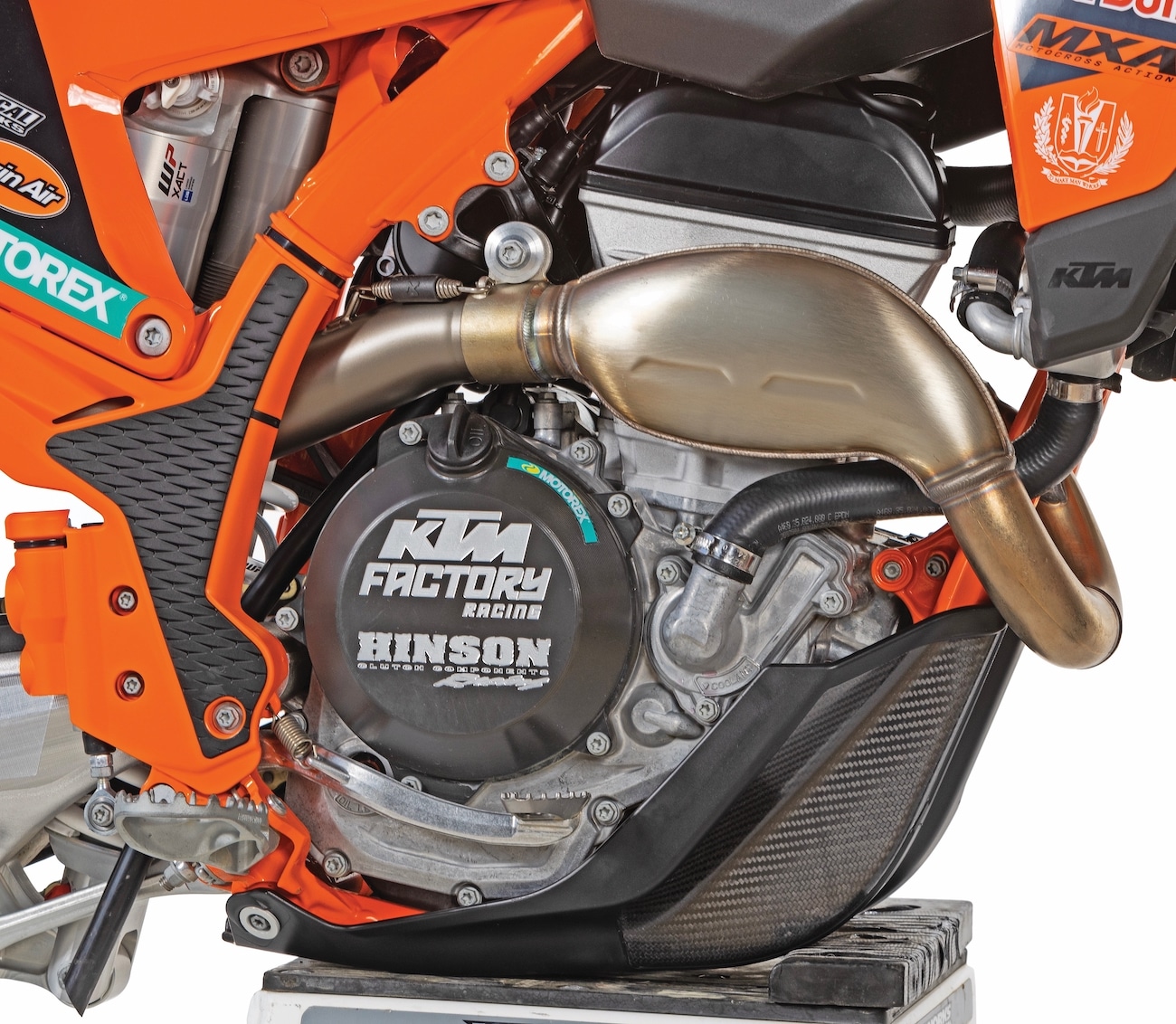

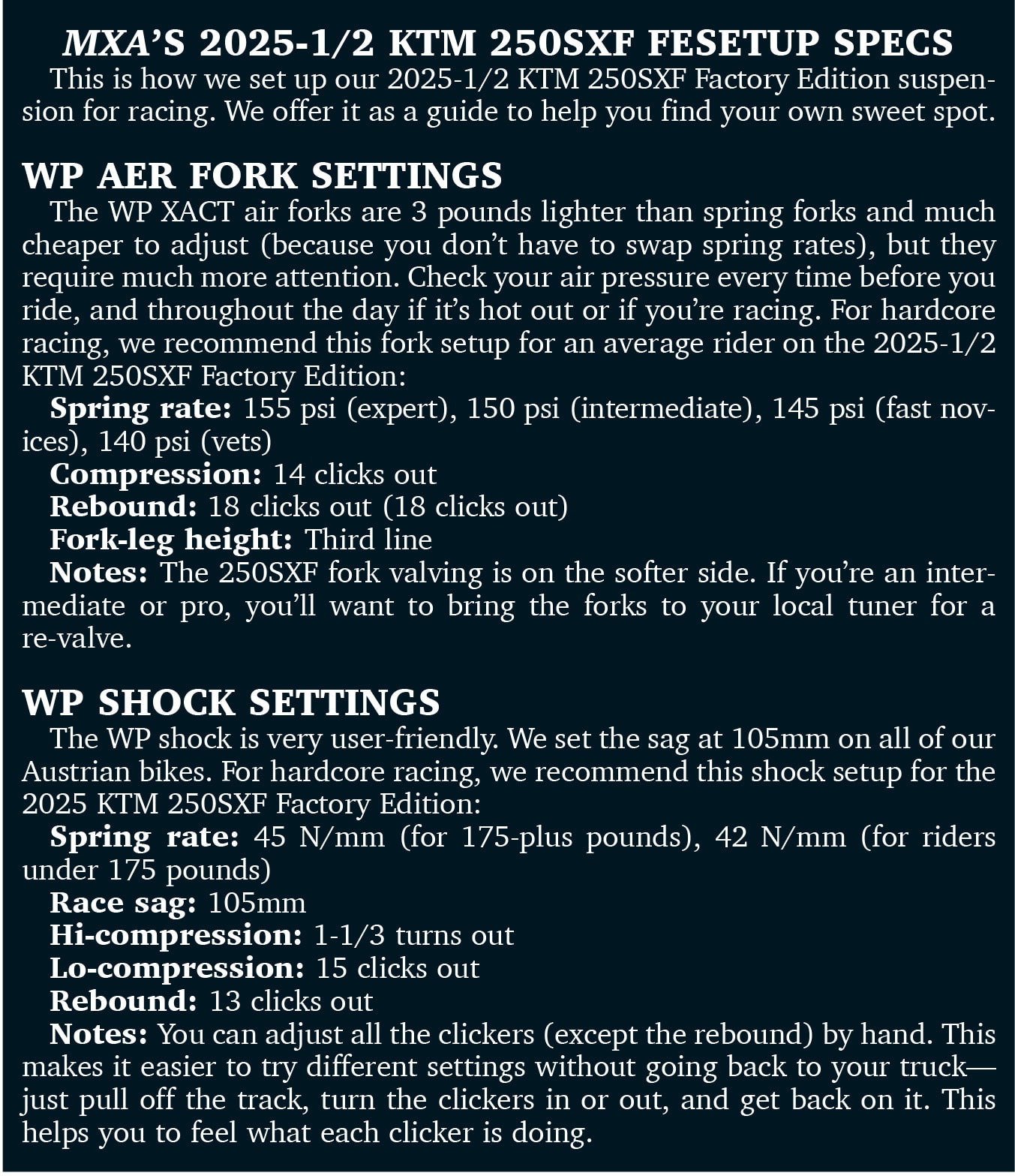

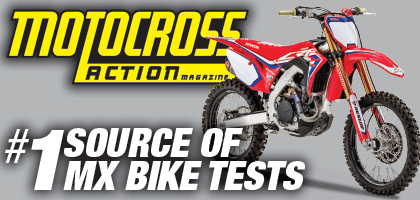


Comments are closed.